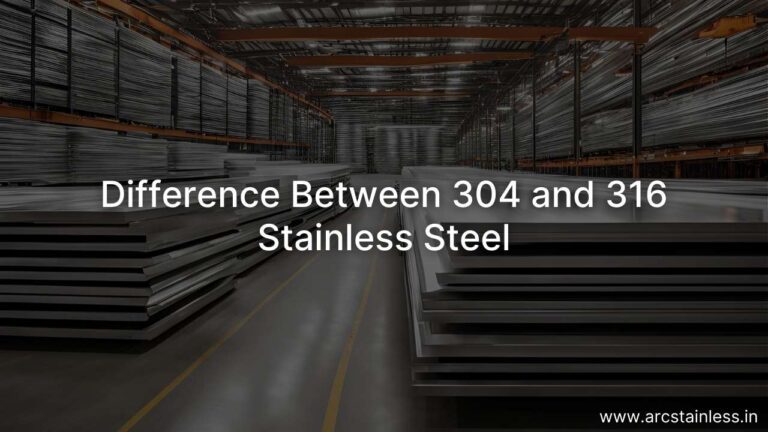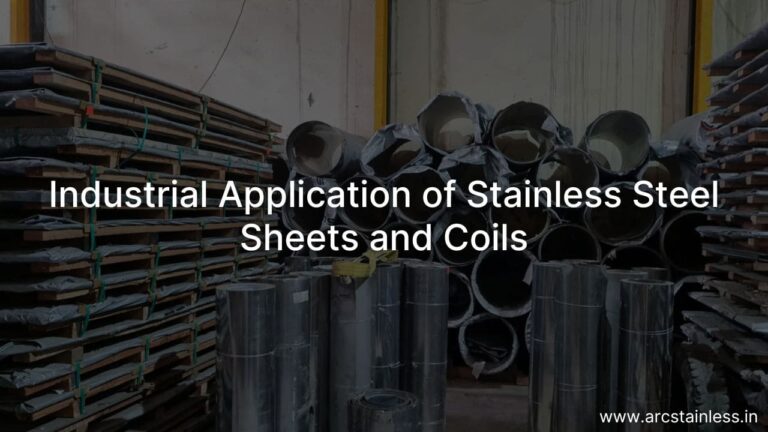Density of 304 Stainless Steel
Understanding Stainless Steel 304 Density
Stainless Steel 304 is one of the most widely used stainless steel alloys across various industries. Its excellent corrosion resistance and versatility make it a popular choice. Understanding the density of Stainless Steel 304 is essential for engineers, manufacturers, and designers, as it helps ensure optimal performance in their applications.
What is Stainless Steel 304?
Stainless Steel 304 belongs to the austenitic family of stainless steels, known for their high levels of chromium and nickel. This alloy typically contains about 18% chromium and 8% nickel, which gives it strong resistance to oxidation and corrosion. Due to its excellent mechanical properties and corrosion resistance, Stainless Steel 304 is commonly used in various applications, including food processing, chemical industries, and architecture.
Composition of Stainless Steel 304
The chemical composition of Stainless Steel 304 is crucial to its properties:
- Chromium (Cr): 18% – Enhances corrosion resistance.
- Nickel (Ni): 8% – Improves toughness and workability.
- Manganese (Mn): 2% – Enhances strength and toughness.
- Silicon (Si): 0.75% – Improves oxidation resistance.
- Carbon (C): 0.08% – Affects strength and hardness.
Density of Stainless Steel 304
Stainless Steel 304 has a density of around 8.00 g/cm³ (grams per cubic centimeter) or 8000 kg/m³ (kilograms per cubic meter). This density is important in engineering because it influences both the weight and strength of the final products.
Factors Affecting the Density of Stainless Steel 304
Several factors can influence the density of Stainless Steel 304, including:
- Composition: The specific alloying elements in Stainless Steel 304 can affect its density. For instance, variations in the amounts of chromium, nickel, and other elements can lead to slight changes in density.
- Temperature: The density of materials, including Stainless Steel 304, can change with temperature. As the temperature increases, the density typically decreases due to thermal expansion.
- Manufacturing Process: The method used to produce Stainless Steel 304 can also influence its density. Processes such as casting, forging, and welding can introduce variations in microstructure, leading to differences in density.
- Work Hardening: Cold working processes can increase the density of Stainless Steel 304 due to the introduction of dislocations and other defects in the microstructure.
- Porosity: The presence of voids or pores within the material can decrease its density. This is especially relevant in cast or sintered products.
Importance of Density in Applications
Understanding the density of Stainless Steel 304 is crucial for various reasons:
- Weight Calculations: Knowing the density allows engineers to calculate the weight of components accurately, which is essential for design and structural integrity.
- Material Selection: The density of a material can influence its suitability for specific applications. For example, in applications where weight savings are critical, understanding the density helps in selecting the right material.
- Performance Analysis: The density of Stainless Steel 304 impacts its mechanical properties, such as strength and rigidity. Engineers need to consider density when analyzing performance under various loads and conditions.
- Cost Estimation: Since density affects weight, it also plays a significant role in cost estimation for transportation and handling of materials.
Applications of Stainless Steel 304
Stainless Steel 304 is widely used in various industries due to its excellent properties. Some common applications include:
- Food Processing Equipment: Its corrosion resistance makes Stainless Steel 304 an ideal choice for food processing machinery, storage tanks, and kitchen equipment. It meets hygiene standards required in food applications.
- Chemical and Petrochemical Industries: The ability to withstand corrosive environments makes this alloy suitable for pipes, valves, and fittings in chemical processing plants. Its durability ensures long service life.
- Construction and Architecture: Stainless Steel 304 is often used in architectural applications, including cladding, handrails, and structural components due to its aesthetic appeal and durability. It is also used in building facades.
- Medical Equipment: The biocompatibility and corrosion resistance of Stainless Steel 304 make it a popular choice for medical devices and surgical instruments, ensuring safety and effectiveness.
- Automotive Components: This alloy is utilized in automotive exhaust systems, trim, and other components due to its strength and corrosion resistance.
- Marine Applications: Stainless Steel 304 is often used in marine environments due to its resistance to saltwater corrosion, making it suitable for boat fittings and components.
Comparison with Other Stainless Steel Grades
While Stainless Steel 304 is widely used, it’s essential to compare it with other grades to understand its unique properties.
Density Comparison
- Stainless Steel 304 vs. Stainless Steel 316: Stainless Steel 316 has a similar density of approximately 8.00 g/cm³ but contains molybdenum, providing enhanced corrosion resistance, particularly in chloride environments. This makes it ideal for marine applications.
- Stainless Steel 430: This ferritic stainless steel has a lower density of approximately 7.70 g/cm³, making it lighter but less corrosion-resistant than 304. It’s often used in less demanding applications.
- Stainless Steel 201: This grade has a density of around 7.93 g/cm³ and is less expensive due to its lower nickel content. However, it is less corrosion-resistant compared to 304, making it suitable for indoor applications.
Density Calculations and Conversions
To calculate the weight of Stainless Steel 304 components, you can use the following formula:
Weight (kg) = Volume (m³) × Density (kg/m³)
For instance, if you have a stainless steel sheet measuring 1 m² and 0.01 m thick:
- Volume = 1 m² × 0.01 m = 0.01 m³
- Weight = 0.01 m³ × 8000 kg/m³ = 80 kg
Benefits of Using Stainless Steel 304
Stainless Steel 304 offers several benefits, making it a popular choice across industries:
- Corrosion Resistance: Its high chromium content provides excellent resistance to rust and corrosion, ensuring longevity in various environments.
- Versatility: This alloy can be easily fabricated into various shapes, making it suitable for different applications. It can be welded, machined, and formed easily.
- Aesthetic Appeal: Stainless Steel 304 has a shiny, attractive finish, making it ideal for architectural and decorative applications. It is often used in high-visibility areas.
- Hygienic Properties: The smooth surface of Stainless Steel 304 is easy to clean, making it ideal for food and medical applications. It does not harbor bacteria and is compliant with health regulations.
- Heat Resistance: Stainless Steel 304 can withstand elevated temperatures, making it suitable for applications that involve heat exposure, such as cooking equipment.
- Durability: This alloy exhibits excellent mechanical properties, providing durability and strength in demanding applications.
Challenges and Considerations
Despite its numerous benefits, there are some challenges associated with using Stainless Steel 304:
- Cost: Stainless Steel 304 is generally more expensive than carbon steel and other materials, which can impact project budgets. Price fluctuations in raw materials can also affect overall costs.
- Weldability Issues: While Stainless Steel 304 is weldable, care must be taken to avoid issues such as sensitization during welding, which can lead to reduced corrosion resistance. Proper welding techniques and filler materials should be used.
- Magnetic Properties: Although Stainless Steel 304 is primarily non-magnetic, it can become slightly magnetic when cold-worked, which may affect its applications in magnetic-sensitive environments.
- Stress Corrosion Cracking: In certain environments, such as those containing chlorides, Stainless Steel 304 can be susceptible to stress corrosion cracking. Careful selection of materials and proper design can mitigate this risk.
- Thermal Expansion: The density and thermal expansion properties of Stainless Steel 304 must be considered in design applications, especially in environments with significant temperature fluctuations.
Environmental Impact and Sustainability
Stainless Steel 304 is also notable for its environmental sustainability. Being fully recyclable, it contributes to a circular economy. Here are some aspects related to its sustainability:
- Recyclability: Stainless Steel 304 can be recycled without losing its properties, reducing the need for raw materials and minimizing waste.
- Energy Efficiency: The production of stainless steel has become increasingly energy-efficient, reducing the carbon footprint associated with its manufacturing.
- Long Lifespan: The durability and corrosion resistance of Stainless Steel 304 ensure long service life, reducing the frequency of replacements and minimizing waste.
Future Trends in Stainless Steel 304
The future of Stainless Steel 304 is influenced by various trends:
- Advancements in Manufacturing Technologies: New manufacturing processes and techniques are being developed to enhance the properties of Stainless Steel 304, improving its performance in challenging applications.
- Increased Demand in Renewable Energy: As industries shift toward renewable energy sources, Stainless Steel 304 is becoming essential in the construction of wind turbines and solar panel frames due to its durability and corrosion resistance.
- Innovations in Surface Treatments: Researchers are exploring surface treatments and coatings to enhance the properties of Stainless Steel 304. These improvements boost its performance in specific environments.
- Growing Applications in Biomedicine: With the rise of advanced medical devices and implants, the demand for biocompatible materials like Stainless Steel 304 is expected to grow, driving further research and development.
- Sustainable Practices: With the growing emphasis on sustainability, manufacturers are adopting eco-friendly production methods. They are also considering the lifecycle of materials, which further increases the appeal of Stainless Steel 304.
Conclusion
Understanding the density of Stainless Steel 304 is essential for engineers, designers, and manufacturers across various industries. Its unique properties, applications, and benefits make it a preferred choice for numerous applications. Despite some challenges, its advantages far outweigh the drawbacks, contributing to its continued popularity in the market. As industries evolve, Stainless Steel 304 will likely remain a cornerstone material, adapting to meet the demands of the future.








